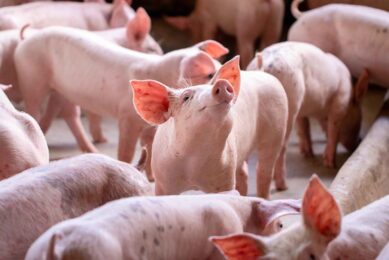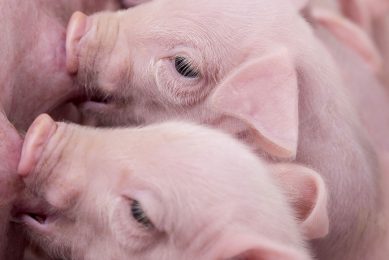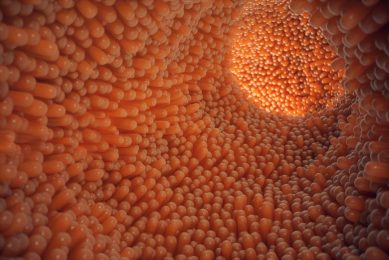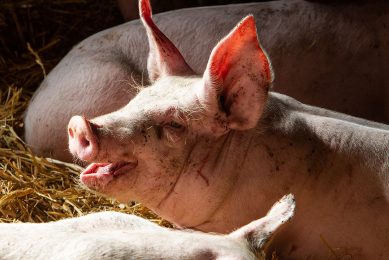Enzootic pneumonia – is it a good time to consider eradication?
With costs rising rapidly due to increases in feed prices, is it a good time to focus on improving health and considering eradication of such production depressing diseases as enzootic pneumonia?
With costs rising rapidly due to increases in feed prices, is it a good time to focus on improving health and considering eradication of such production depressing diseases as enzootic pneumonia ?
At a recent Pig Veterinary Society meeting in the UK, the subject of eradication was aired in a number of presentations. Enzootic pneumonia eradication programmes seem to be one of the most successful and relatively easy to carry out. The disease itself is easy to monitor at the slaughter house and make an assessment of the severity of the problem. A cost of disease can be applied depending on the average herd lesion score determined (see Graph 1 ).
| Graph 1. Cost of enzootic pneumonia per pig fattened according to herd average lung lesion score (%) |
The simplest method is to use partial depopulation of pigs below 9 months of age, so that you are treating pigs which have recovered from the disease and are fully immune. This means that lung lesions have disappeared, as these can act as reservoirs for Mycoplasma hyopneumoniae, the cause of the disease, and make it difficult for the antibiotics to penetrate and eliminate the organisms. In herds that have recently broken down, it is best to wait several months for immunity to build up and this process can be speeded up by the use of mycoplasma vaccines before the eradication programme starts.
At the same time other diseases can be eliminated if the programme is properly planned and this can influence your choice of which antimicrobial or combination to use.
Tiamulin is tried and tested in several countries, especially in Scandinavia, against enzootic pneumonia and can also be used to eliminate swine dysentery (Brachyspira hyodysenteriae) very successfully. It is less sure against B. pilosicoli and ileitis (Lawsonia intracellularis) but this might be due to the method and high risk of re-contamination. Tilmicosin in feed has also been used successfully for enzootic pneumonia and occasionally has been successful against Actinobacillus pleuropneumoniae but it is much more difficult to eradicate than mycoplasma. It has also shown activity against ileitis. There were new reports on the use of tulathromycin in a long acting injectable form for eradication of M. hyopneumoniae and this may also prove a useful approach.
With the vista of low pig prices and high feed costs coming, it might be timely to take the opportunity to improve the health status of the herd in time for the anticipated recovery later next year.











